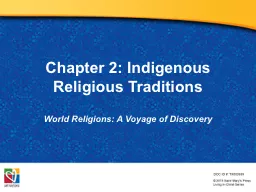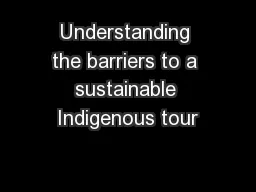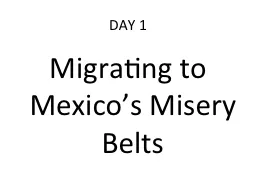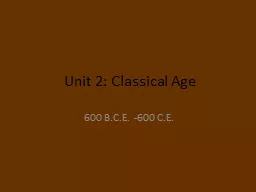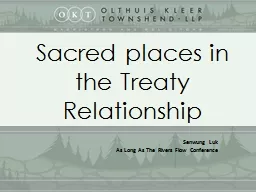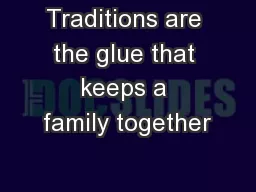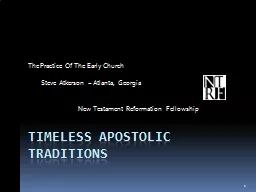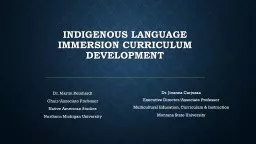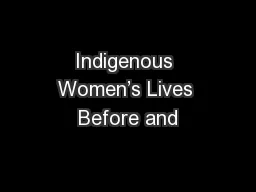PPT-Chapter 2: Indigenous Religious Traditions
Author : phoebe-click | Published Date : 2017-11-10
World Religions A Voyage of Discovery DOC ID TX003939 Aboriginal Rock Art Through the ages Aboriginal Australians have communicated through art Their art includes
Presentation Embed Code
Download Presentation
Download Presentation The PPT/PDF document "Chapter 2: Indigenous Religious Traditio..." is the property of its rightful owner. Permission is granted to download and print the materials on this website for personal, non-commercial use only, and to display it on your personal computer provided you do not modify the materials and that you retain all copyright notices contained in the materials. By downloading content from our website, you accept the terms of this agreement.
Chapter 2: Indigenous Religious Traditions: Transcript
World Religions A Voyage of Discovery DOC ID TX003939 Aboriginal Rock Art Through the ages Aboriginal Australians have communicated through art Their art includes paintings on leaves and carving in wood or stone. to . the changing ice . environment. Tatiana D. . Bulgakova, . Ludmila. . B. . Gashilova. . The Institute of the Peoples of the North. . (IPN). of the Herzen State Pedagogical University. of Russia (RSPU) . Family Rituals. There are three main types of family rituals:. Rites of passage. Family traditions. Family routines. Rites of Passage. Rites of passage mark a time when a person reaches a new and significant change in his or her life.. Dr Lisa . Ruhanen, The University Of Queensland. Dr Michelle . Whitford & . Dr Char-lee . McLennan, Griffith University. Context. Globally tourism has been advocated as a socio-economic opportunity for Indigenous peoples. Migrating to Mexico’s Misery Belts. Migrating to Mexico’s Misery Belts. Day 1 Objectives. : Students will: . (1) define the term misery . b. elt,. (2) describe the living conditions in a misery belt, and . 600 B.C.E. -600 C.E. . Tabs. 2.1 Development & Codification of Religious & Cultural Traditions. 2.2 Development of States & Empires. 2.3 Trans-regional networks of Comm. & Exchange. 2.1 Development & Codification of Religious & Cultural Traditions. A report prepared for Pew Charitable Trusts. November 2015. Project objectives. Framework for evaluating the economic and social benefits of Indigenous . Ranger . programs. Assess benefits - literature and case studies. Mer. Kai. Country of Origin. The game ‘. Mer. Kai’ originated from Australia and was invented by its Indigenous peoples. The game may be interpreted as ‘hacky sack’ however the name ‘. Mer. Senwung Luk. As Long As The Rivers Flow Conference. Crown’s Perspective. Focus on the Treaty surrender clause:. […] the . said Indians DO HEREBY CEDE, RELEASE, SURRENDER AND YIELD UP to the Government of the Dominion of Canada, for Her Majesty the Queen and Her successors for ever, all their rights, titles and privileges whatsoever, to the lands included within the following limits […]. . Traditions. Those little rituals passed down from generation to generation that help shape your family by creating a sense of unity, warmth and closeness. They create memories that fill your mind with peace, love, happiness, and security.. The Practice Of The Early Church. Steve . Atkerson. ~ Atlanta, Georgia. . New Testament Reformation Fellowship. 1. “We are not aiming at mere technical correctness. It is spiritual reality we are after . . . . Dr. Martin Reinhardt. Chair/Associate Professor. Native American Studies. Northern Michigan University. Dr. . Jioanna. . Carjuzaa. Executive Director of the Center for Bilingual and Multicultural Education. After the Conquest. Pre-Contact, Indigenous Women’s Lives. Most Indigenous/Native Societies were . MATRIARCHAL. : a family, society, community, or . state . governed . . by . women. . MATRILINEAL: inheriting or determining descent through the female line. . Indigenous population. At 30 June 2011, the estimated Western Australian Indigenous population was 88,277.. In 2011, around 96% of Indigenous people living in WA were Aboriginal, 1.9% were Torres Strait Islanders, and 1.9% of people identified as being of both Aboriginal and Torres Strait Islander descent.. Army professionals:. Integrate Army Customs, Courtesies, and Traditions within their organizations to develop esprit de corps . Incorporate Army history into formal and informal activities to inspire a sense of shared organizational and Army heritage in their members.
Download Document
Here is the link to download the presentation.
"Chapter 2: Indigenous Religious Traditions"The content belongs to its owner. You may download and print it for personal use, without modification, and keep all copyright notices. By downloading, you agree to these terms.
Related Documents

